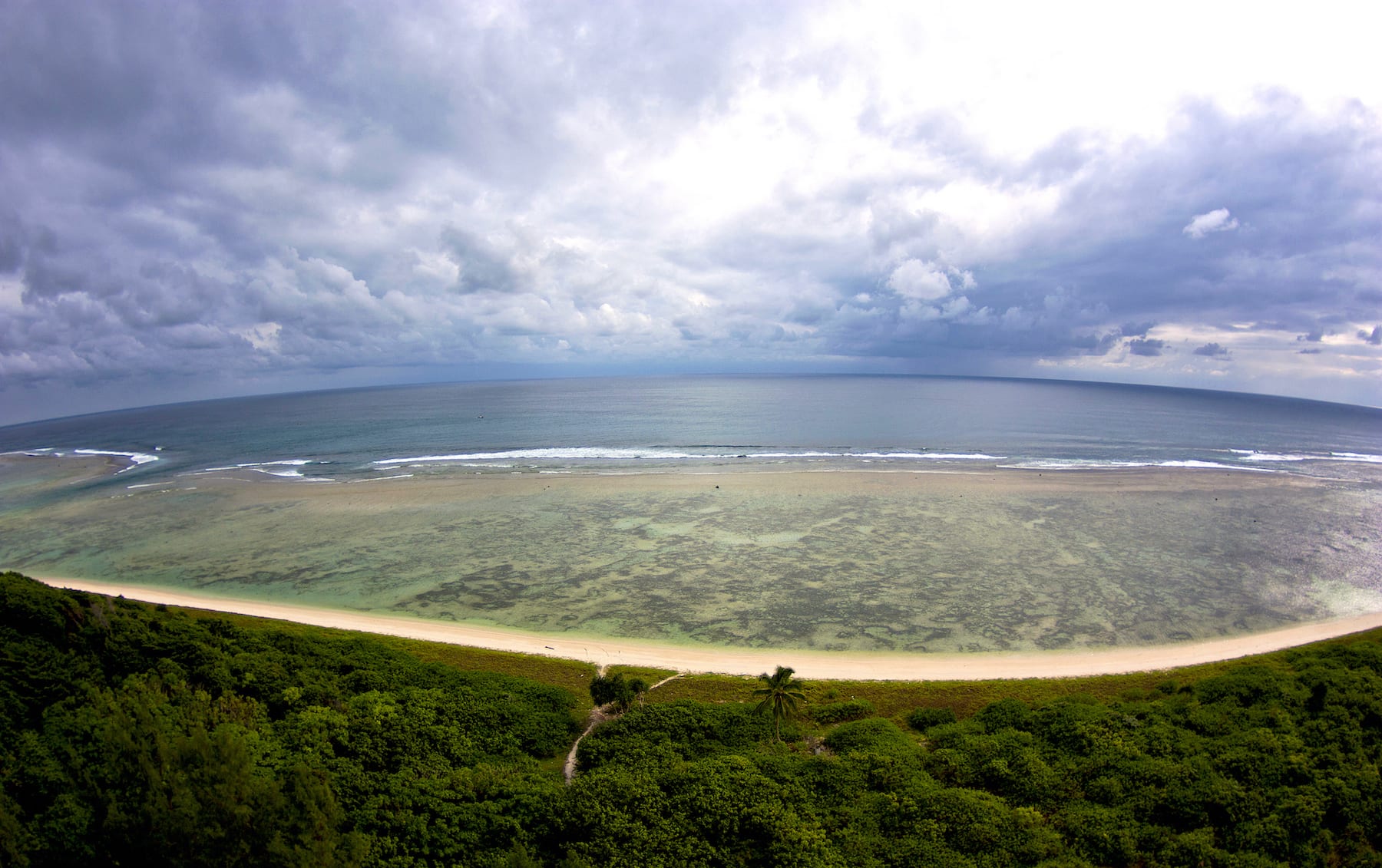Islands are irresistibly charming. Whether in folklore, movies, or scientific discovery, from geology to biogeography, islands have played a large role in our imagination. Robinson Crusoe, Lord of the Flies, Treasure Island, the list of books about islands goes on — there’s something simultaneously romantic and primeval about them.
In the 1970s, led by Rom and Zai Whitaker, founders of the Madras Snake Park and the Madras Crocodile Bank, naturalists in mainland India developed a fascination for the Andaman and Nicobar Islands. In one of her editorials Zai readily admitted that they all had “Andaman fever” and could not stop thinking about it. Rom gave up his American citizenship so that he could travel to the islands and work there on king cobras and crocodiles. Satish Bhaskar, the original sea turtle explorer, spent months traveling to the furthest reaches of these islands and camping by himself on remote beaches.

West Bay beach in Little Andaman Island is the most significant nesting site for leatherback turtles in the Andaman Islands. Photo: Adhith Swaminathan Cover photo: A monitor lizard (Varanus salvator) in nearshore waters of the Andamans. Cover photo: Umeed Mistry
As a college student in Chennai, I too got sucked into this vortex of obsession with the islands. This archipelago, born of a submerged mountain chain – the Arakan Yoma that stretches South from Myanmar – with its rich tropical forests, its (once) pristine beaches, its blue waters and coral reefs, posed a temptation that no reasonable naturalist could resist.
It would be a decade before I got an opportunity to finally visit. In 2001, my partner Meera Oommen and I set out for the Nicobars, where I would initiate my work on leatherback turtle genetics at Galathea, one of the largest rookeries for the species in the Indian Ocean. Meera would conduct a project on the little-known Nicobar tree shrew, finding a strange feeding association with the greater racket-tailed drongo and a sparrow-hawk, which one would normally expect to be its predator. Just a few years later in 2004, this beach and many others would be wiped out by a tsunami. Thousands lost their lives, including a field researcher and naturalists staying at the same camp we did. Miraculously, our field assistant, Agu, would survive the tsunami and an ordeal of thirteen days drifting at sea.
For the most part, field researchers did not worry about tsunamis when they visited — there was mostly the spectre of mosquitoes and malaria, especially the cerebral variety which kills quickly if not treated. Most researchers contracted one form of malaria or another when they worked there. In fact, the first attempts at colonisation of the islands in the late eighteenth century failed because of tropical diseases and the hostility of indigenous communities. The islands were finally settled in the mid-nineteenth century for the establishment of a penal settlement.
The Andamans are home to several indigenous tribes, all of ancient origin, who are believed to have migrated to the islands about 15,000 years ago from eastern India. The Jarawa remain confined to a reserve in the south and middle Andamans, and the Onge to Little Andaman. The Sentinelese, still with no formal contact with modern society, live on North Sentinel Island to the west of the Andamans. Few members of the Greater Andamanese survive. The Nicobaris, a coastal community throughout the Nicobar group, and the Shompen, a forest tribe in the Nicobars, are believed to have migrated from Southeast Asia. Today, the islands are occupied by a range of settlers from across India.
After the tsunami, I returned to the islands in 2007 to establish a long-term monitoring programme on Little Andaman Island. We surveyed two remote beaches, our boat nearly capsized while landing at West Bay, and we spent 12 hours walking across coral and swamp to reach our rendezvous point with the boat. All in a day’s work. Since then, our field team sets up camp each year, for nearly ten years now, and spends two months monitoring leatherbacks, pretty much out of touch with civilisation.
Following their intrepid surveys for crocodiles, sea turtles and other fauna through the 1970s and 1980s, the Madras Crocodile Bank decided to set up the Andaman and Nicobar Environment Team (ANET) in Wandoor, not far from Port Blair. ANET serves as a field research base for multiple research organisations and engages with policy-related issues on the islands. Researchers based at ANET work on various aspects of ecology including coral reefs, reef fish, dugongs, sharks, sea turtles, as well as on human ecology, ecotourism, and coastal regulation policy. There is an increasing emphasis on marine ecology, using SCUBA to study coral reefs, reef fish, and dugongs.
Some have worked there for over a decade, some for a quarter of a century, the better part of their adult lives. They arrive and can never leave. Everyone has some adventure or the other. Maybe none quite as dramatic as Agu, but still. All of them have “Andaman fever”, not to be confused with a little-known tropical disease that does in fact occur in the islands. This fever is an obsession with this tropical paradise, with its marine and terrestrial riches, its native and settler culture, its struggle with development. A desire to be there and contribute in some way to preserving its biodiversity and its culture.